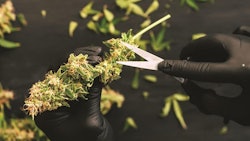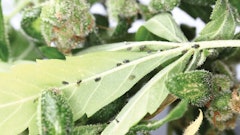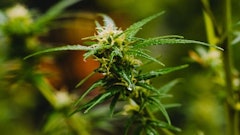
1. What is the biggest misconception about odor in cannabis cultivation?
By far, the largest misconception is the conflation of odor with a strain’s particular terpene profile. Even seasoned cultivators will note that beta-myrcene (because it’s predominant in most cannabis strain terpene profiles) is the source of the classic “skunk odor.” But this isn’t necessarily true. Looking at only a quantitative terpene review is extremely misleading when it comes to cannabis odor as it ignores the importance and relevance of odor detection thresholds (ODTs). ODTs are a scientific name for the concentration at which the odor of a volatile organic compound (VOC), such as a terpene, will first be detectable by the human nose. Research has proven that just because a VOC is present in large quantities does not necessarily indicate that it will be detectable as an odor. Given the significance of the question of the true source of cannabis odor, Byers Scientific has engaged a leading plant emissions research team to find the answer. While the research is ongoing, early results point to some other compounds outside of the usual list of suspects as the odor culprit. In fact, it appears that there may be myriad contributors to the odor and, ironically, many of these compounds are found in the smallest concentrations in cannabis plant emissions.
2. Last year you introduced our readers to your supervisory control and data acquisition (SCADA) smart monitoring/reporting technology. How can the data you provide protect cannabis operators and minimize compliance risks?
Fugitive odor remains the Achilles’ heel of the industry. Odor is subjective and emotional. Given these challenges, it is quite unfortunate that odor complaints have become the lever communities use if they don’t want cannabis in “their backyard.” Fortunately for our clients, every Byers Scientific patented waterless vapor-phase system comes equipped with SCADA technology. This feature allows Byers Scientific to monitor the equipment 24/7, provide autonomously generated weekly operational reports and, with an optional weather station, track wind speed and direction. When faced with an odor complaint, our clients, armed with this critical data, can verify the odor control system was operational at the relevant time and determine if the alleged “receptor” was upwind or downwind. Without this tool, the cultivator and other stakeholders are left with no defense and are subject to regulatory action and more scrutiny from an already unsupportive community. Given that odor complaints can and have sunk entire cannabis operations—taking significant investments down with them—our SCADA technology provides clients with a powerful tool to protect their business.
3. What is the biggest piece of advice you can give cannabis cultivators when it comes to odor control?
The best advice I can give is to invest the time to think through the development of their odor control plan critically as part of the initial design phase. That is the best time to consider the appropriate approach for tackling odor at their particular site. Cultivators should work with qualified professionals to develop an all-encompassing plan including a detailed equipment list, HVAC calculations, odor control best practices, and documentation of preventative maintenance and verification that the odor control system(s) selected are going to be able to operate as designed.
Commercial cannabis operation stakeholders must proactively manage odor control as a liability, no different than a proactive cultivation plan to manage mold or viruses. Our hope is that readers can learn from the mistakes of cannabis companies who treated odor control as an afterthought when selecting their property and going through the design process for their facility.

















